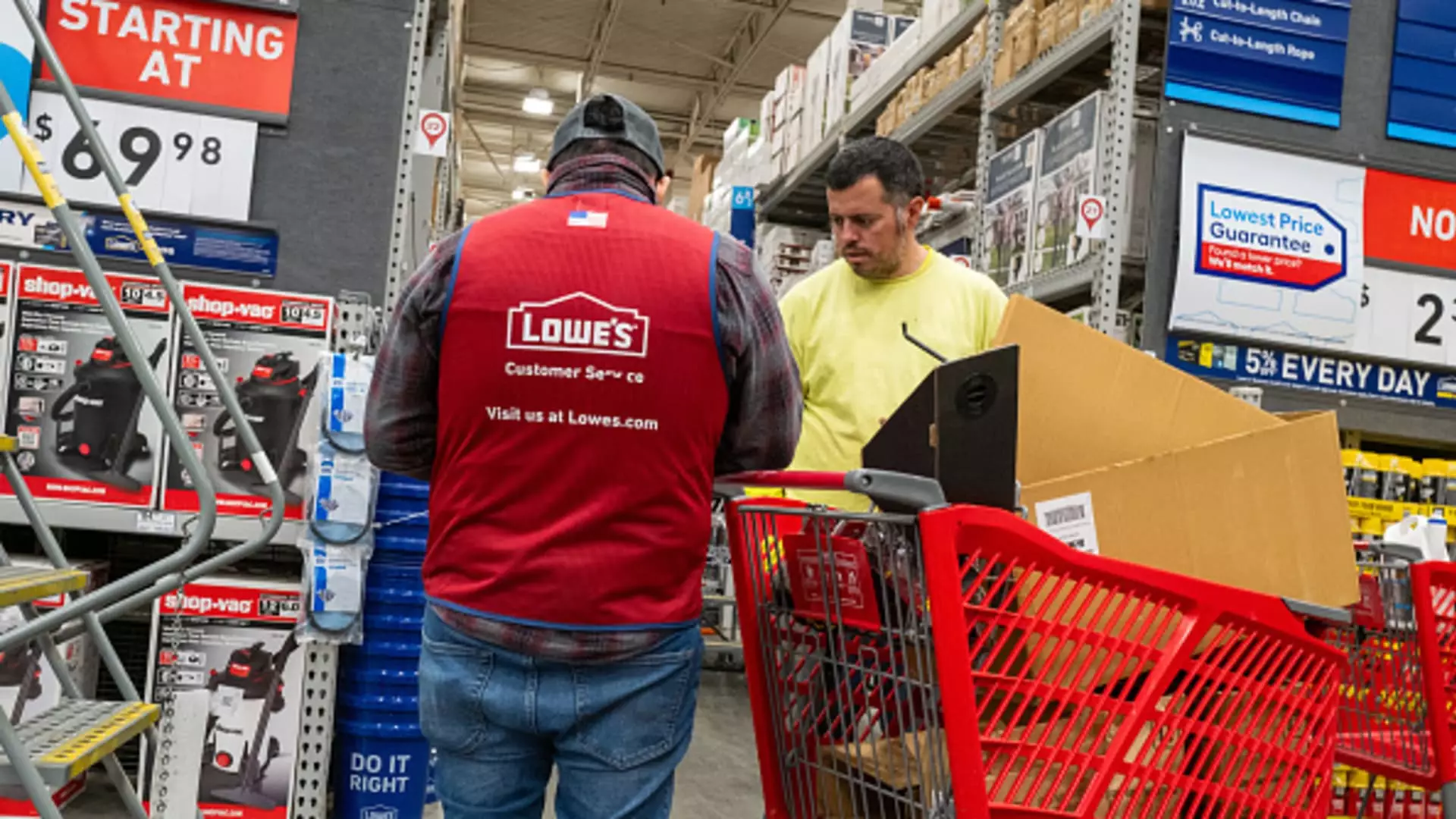Lowe’s recent quarterly sales decline and subsequent cut in its full-year forecast have raised concerns about the state of the home improvement industry and the overall economic backdrop. The company now projects lower total sales and weaker comparable sales than previously expected, citing consumer hesitation due to high inflation and looming interest rate cuts from the Federal Reserve. This has led to a revised outlook for adjusted earnings per share, signaling a challenging period ahead for the retailer.
Lowe’s CEO, Marvin Ellison, highlighted the impact of consumer sentiment on the company’s performance, noting that shoppers are delaying big-ticket purchases while waiting for interest rates to fall. With about 90% of Lowe’s customers being homeowners with fixed mortgage rates under 4%, concerns about higher borrowing costs are affecting their willingness to undertake major home projects. This hesitance reflects broader economic uncertainties and the need for favorable market conditions to drive increased home improvement activity.
Financial Performance and Industry Trends
Lowe’s reported a decline in net income and sales for the second quarter, marking the sixth consecutive quarter of year-over-year sales drops. Comparable sales decreased by 5.1%, driven by reduced discretionary spending on home projects and challenging weather conditions. Despite these setbacks, the company saw growth in its online business and sales to home professionals, providing some offset to the overall decline. The results underscore the tough market conditions facing home improvement retailers as they navigate changing consumer behavior and economic pressures.
The heightened competition in the home improvement sector was evident in the performance of Lowe’s rival, Home Depot, which surpassed Wall Street’s expectations in its recent earnings report. However, both companies anticipate a weaker second half of the year, reflecting consumer caution and economic uncertainties. Factors such as higher mortgage rates and borrowing costs have added strain to the industry, leading to a deferral mindset among customers. This competitive landscape underscores the challenges faced by retailers in addressing shifting market dynamics and consumer preferences.
Outlook and Long-Term Opportunities
While the near-term outlook for home improvement retailers remains uncertain, Lowe’s CEO expressed optimism about the industry’s medium- and long-term prospects. Aging housing stock, increased household formation by millennials, and the preferences of Baby Boomers to adapt their current homes present opportunities for growth in the segment. As market conditions stabilize and consumer confidence improves, Lowe’s aims to capitalize on these trends and enhance its market share. The company’s focus on long-term sustainability and adapting to changing consumer needs will be critical in navigating the evolving home improvement landscape.
Lowe’s recent forecast cut highlights the challenges facing the company and the broader home improvement industry. Economic uncertainties, consumer sentiment, and competitive pressures shape the current market environment, requiring retailers to adapt and innovate to stay relevant. Despite short-term headwinds, the long-term opportunities in the home improvement sector offer potential for growth and market expansion. By focusing on strategic initiatives and addressing changing consumer demands, Lowe’s can position itself for success in a dynamic and evolving retail landscape.


Leave a Reply